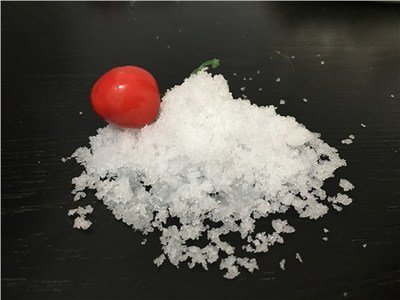Industrial Manufacture of Nitric Acid
Nitric acid plays a key role in many industries, from fertilizers to explosives. Its widespread demand makes understanding its production essential. The industrial manufacture of nitric acid relies on efficient chemical processes that meet global needs. This post outlines how nitric acid is made, its uses, and advancements shaping its production.
Overview of Nitric Acid
Nitric acid (HNO₃) is a highly reactive and crucial compound in many industrial applications. Known for its strong oxidizing properties, this mineral acid plays an essential role in manufacturing and chemical synthesis. Let’s explore its composition, unique properties, and how it’s used across industries.
Chemical Composition and Properties
Nitric acid has the molecular formula HNO₃, which means each molecule comprises one hydrogen atom, one nitrogen atom, and three oxygen atoms. Its structure includes a planar nitrate group (NO₃⁻) bonded to a hydrogen ion (H⁺). This combination makes it highly corrosive and reactive.
In its pure form, nitric acid is a colorless liquid. However, exposure to light or heat can turn it yellowish due to the formation of nitrogen oxides. Here are some notable properties:
- Physical properties:
- Density: 1.51 g/cm³ (highly concentrated form).
- Boiling point: 83°C (181.4°F).
- Freezing point: -42°C (-43.6°F).
- Solubility: Fully soluble in water, forming an acidic solution.
- Chemical properties:
- Strong acid: Completely ionizes in water to produce hydronium (H₃O⁺) and nitrate (NO₃⁻) ions.
- Oxidizing agent: Reacts with metals, non-metals, and organic compounds.
- Corrosive: Capable of dissolving most metals except a few like gold and platinum when used alone.
For a deeper dive into nitric acid’s properties, check out this resource on Britannica.
Uses in Industry
Nitric acid serves as a linchpin in industrial processes, with its applications spanning from agriculture to medicine. Below are some major industries that rely on its unique capabilities:
- Fertilizers
- The primary use (approximately 80%) of nitric acid is in fertilizer production. Neutralizing it with ammonia produces ammonium nitrate, a key ingredient in agricultural fertilizers. This helps boost crop yields and global food supply. More information is available at Essential Chemical Industry.
- Explosives
- Nitric acid is central in making explosives like TNT (trinitrotoluene) and nitroglycerin. Its ability to introduce nitro groups into organic molecules fuels these reactions.
- Pharmaceuticals
- It’s used in the synthesis of intermediates and active ingredients for drugs. For instance, nitration reactions are vital in producing essential compounds.
- Metallurgy
- Nitric acid plays a role in refining precious metals like silver, gold, and platinum. It removes impurities, ensuring high-purity metals for various applications.
- Chemical Synthesis
- Industries use it to create dyes, pigments, and polymers due to its versatile reactivity.
More insights into nitric acid’s applications can be found on Lab Pro’s blog.
Historical Development of Nitric Acid Production
Understanding how nitric acid production evolved offers valuable insights into the technological advancements that shaped its current industrial manufacturing processes. This section explores early production methods and modern innovations.
Early Methods of Production
Before industrialization, nitric acid production relied on small-scale, labor-intensive techniques. One of the earliest methods involved the reaction of potassium nitrate (saltpeter) with concentrated sulfuric acid. This process, known as calcination, required heating the mixture in ceramic retorts and collecting the vapors. The nitric acid produced was impure and in limited quantities, making it practical only for niche applications.
During the Middle Ages, alchemists played a pivotal role in refining these methods. By the 17th century, chemists had begun experimenting with the nitration of other compounds to improve yields. Potassium nitrate, abundant in certain regions, became the primary raw material.
The significant drawback of these historical methods was inefficiency. Production was slow, yields were low, and the process consumed large amounts of raw materials. However, these early techniques laid the groundwork for the development of modern nitric acid manufacturing. Learn more about nitric acid’s historical roots in this research article.

Modern Techniques and Innovations
The transition to large-scale nitric acid production began in the 19th and early 20th centuries, driven by advancements in chemistry and industrial processes. The introduction of the Ostwald process by Wilhelm Ostwald in 1902 was a defining breakthrough. This method involves the catalytic oxidation of ammonia using a platinum-rhodium catalyst, followed by absorption of nitrogen oxides in water to produce nitric acid.
Modern nitric acid plants now use variations of the Ostwald process, including mono-pressure, dual-pressure, and high-pressure systems. These innovations have improved yield, reduced energy consumption, and allowed for continuous operation.
Key improvements include:
- Catalyst efficiency: Modern catalysts minimize material loss and optimize reaction rates.
- Waste gas recycling: Systems now capture and reuse nitrogen oxides, reducing environmental impact.
- Automation: Advanced automation improves process control and reduces human error.
The dual-pressure process, considered the most efficient, is widely used in high-capacity plants. It combines low-pressure ammonia oxidation with high-pressure absorption to maximize nitric acid output. Learn more about the latest advancements here.
By combining historical knowledge with cutting-edge technology, today’s processes enable the industrial manufacture of nitric acid to meet global demand sustainably and efficiently.
Conclusion
The industrial manufacture of nitric acid is a cornerstone of modern industry, crucial for producing fertilizers, explosives, and countless other products. Advances like the Ostwald process and dual-pressure systems have made production more efficient and sustainable, meeting global demand while minimizing environmental impact.
Understanding these processes highlights the importance of innovation in chemical manufacturing. If you’re curious about how these advancements shape other industries, explore more about chemical engineering and materials science.
What are your thoughts on the future of nitric acid production? Share your perspective below!






